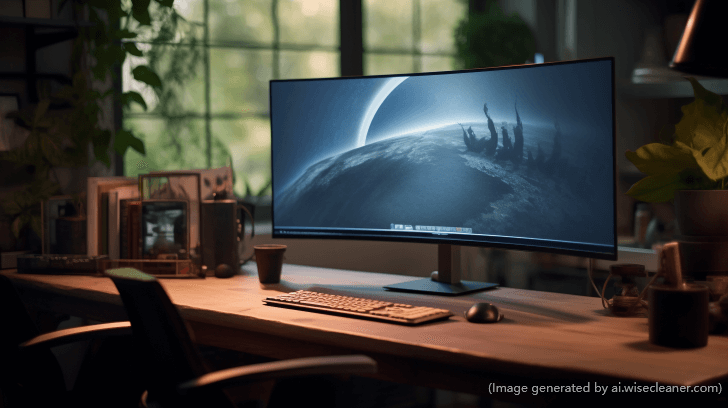WiseCleaner Think Tank
Encounter difficult computer problems?
All about maintenance and optimization of your Windows System.
Apr 9, 2024

A flickering screen could be an annoying and sometimes alarming issue, whether you are using a desktop or laptop. Although it might not happen frequently for now, you will find ignoring it only disrupts your workflow, strains your eyes, and causes headaches over time.
Fortunately, there are several potential solutions to fix this problem. In this WiseCleaner article, we will explore common causes of screen flickering and provide step-by-step guides on how to troubleshoot and fix it.
Before delving into the solutions, it is essential to identify the root cause. Screen flickering or glitching can be caused by various issues, ranging from hardware faults to software conflicts.
Below are several troubleshooting steps you could take to resolve the problem:
First make sure that all the cables are plugged in securely and properly, including the power supply and the cable connecting your monitor to the computer. Unstable or insufficient power could cause screen flicker.
If you are using a laptop and the screen flickers when you move the lid, try adjusting the screen hinge gently to see if the flicking stops.
Start your computer in Safe Mode to see if the flickering consists. If it does not flicker in Safe Mode, this could indicate that the issue is not related to the hardware but a third-party program or a recently installed drive.
Outdated, corrupted, or incorrect graphics drivers could cause screen flickering. Download and install the updated drivers from the website of the manufacturer to see if the flickering persists.
Additionally, if the flickering started after a recent driver update, you might need to roll back to a previous version of the driver.
Recently installed apps could interfere with your display settings. Consider uninstalling software that was installed just before the screen flickers.
Incorrect display settings, such as refresh rate and resolution can cause flickering. Lowering the refresh rate or adjusting to a different resolution might fix the flickering problem by matching the screen’s specifications.
Open the display settings by right-clicking on the desktop, choose Display settings, then Display resolution to adjust the resolution, and Advanced display to choose a refresh rate.
In some cases, certain apps or web browsers enable hardware acceleration, which could lead to flickering.
Try disabling or reducing it in the settings menu of the affected app to check if it resolves the flickering.
Ensure that your OS is up to date. Microsoft often releases patches and updates to fix compatibility issues and software bugs that might cause screen flickering.
If the flickering occurs after a recent Windows update, you may want to uninstall the update.
Excessive heat can cause hardware components to malfunction, including screen flickering. Monitor the temperature of your CPU often to avoid overheating.
A flickering screen can be a frustrating problem. By following the troubleshooting steps in this WiseCleaner post, you can often restore your screen to a stable state.